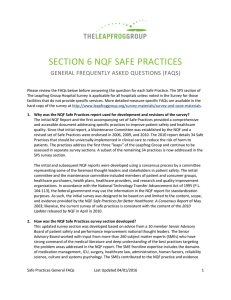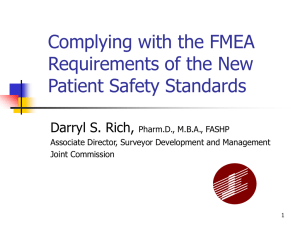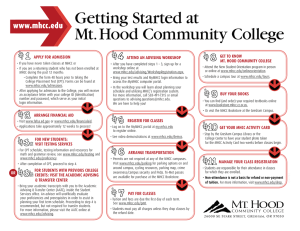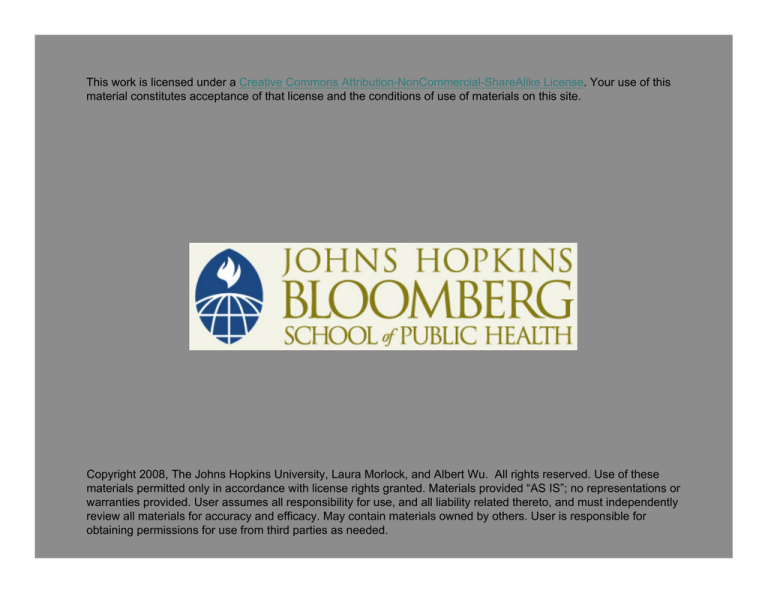
This work is licensed under a Creative Commons Attribution-NonCommercial-ShareAlike License. Your use of this
material constitutes acceptance of that license and the conditions of use of materials on this site.
Copyright 2008, The Johns Hopkins University, Laura Morlock, and Albert Wu. All rights reserved. Use of these
materials permitted only in accordance with license rights granted. Materials provided “AS IS”; no representations or
warranties provided. User assumes all responsibility for use, and all liability related thereto, and must independently
review all materials for accuracy and efficacy. May contain materials owned by others. User is responsible for
obtaining permissions for use from third parties as needed.
Macrosystems: Policy, Payment, Regulation,
Accreditation, and Education to Improve Safety
Albert W. Wu, MD, MPH
Laura Morlock, PhD, MA
Johns Hopkins University
Section A
Federal and State Efforts
Levels within American Healthcare
Patient level
Microsystems—small units of care delivery
Organizations—house and/or support small units
Macrosystems—influence the microsystems
− Policy, payment, regulation, accreditation, professional
education
− Legislators, regulators, accreditors, payers, patient safety
organizations, educators
Notes Available
4
Groups Contributing to Patient Safety
Federal agencies
− AHRQ, QuIC, FDA, IOM, VA, CMS
Congress
States
− Licensing boards, health data organizations, legislatures
Public/private partnerships
− Leapfrog, NQF, state-based coalitions
NGOs
− IHI, ISMP, JCAHO, NPSF, philanthropies
Professional and health care organizations
5
Federal Leadership
Agency for Healthcare Research and Quality (AHRQ) is the
lead federal agency for patient safety
Center for Quality Improvement and Safety (CQuIPS)
National Health Information Technology Coordinator, David
Brailer (U.S. Department of Health and Human Services)
6
The Quality Interagency Coordination (QuIC) Taskforce
Establish a national focus to create leadership, research, tools,
and protocols to enhance the knowledge base about safety
Identify and learn from medical errors through both
mandatory and voluntary reporting systems
Raise standards and expectations for improvements in safety
through the actions of oversight organizations, group
purchasers, and professional groups
Implement safe practices at the delivery level
7
Veterans Administration
Universal bar coding of medications
Electronic patient record (VISTA)
System-wide implementation of safe practices
Four patient safety research centers
8
Federal Policy
S. 544/H.R. 3205, the “Patient Safety and Quality Improvement
Act of 2005”
− Establishes a confidential reporting structure for
voluntary reporting of information on errors to patient
safety organizations (PSOs)
− PSOs would analyze the data to develop patient safety
improvement strategies
− Patient safety information confidential and legally
protected
9
Payment Incentives?
Centers for Medicare and Medicaid Services (CMS) launching
important demonstration experiments of impact of improved
payment on safety efforts
Reward hospitals and physicians that achieve high levels of
safety?
− Central line infections, ventilator-associated pneumonia,
surgical site infections
10
State Policy
Efforts by states to ensure patient safety
21+ have mandatory reporting systems
30+ have some form of tort reform
Enacted legislation creating state patient safety centers
Notes Available
11
Maryland Health Care Commission (MHCC)
Patients’ Safety Act of 2001 charged MHCC with studying the
feasibility of developing a system to reduce the incidence of
preventable adverse medical events
Including a reporting system
Preliminary recommendations to focus on systems,
regulation, strengthening immunity protections, visibility
12
Pennsylvania Act 13
The Medical Care Availability and Reduction of Error Act,
signed March 20, 2002
Requires reporting of serious events or incidents
Provision of written notification to any patients affected by a
serious event
13
Patient Written Notification
Medical facilities are required to provide written notice of
serious events to the patient or an adult family member
within seven days of the occurrence or discovery of the
occurrence of a serious event
14
Laws Protecting Apology
California, Massachusetts, Texas, Colorado, Oregon
legislatures passed laws allowing physicians to make
statements of sympathy and condolence with the assurance
that these statements would not be used against them later
in court
15
Apology Protection
The portion of statements, writings, or benevolent gestures
expressing sympathy or a general sense of benevolence
relating to the pain, suffering, or death of a person involved in
an accident . . . shall be inadmissible as evidence of liability in
a civil action
— Section 1160, California Evidence Code (2000)
16
Section B
Private Sector Efforts
Nongovernmental Organizations (NGOs)
JCAHO
NQF
NPSF
IHI
Regional coalitions
Public-private coalitions
18
National Quality Forum
Public-private partnership to develop and improve quality
measures
Consensus process
− Standards for mandatory reporting
− High-impact, evidence-based safe practices
− Taxonomy
19
NQF Safe Practices
Originally published in 2002
Thirty evidence-based safety practices
JCAHO required hospitals to implement 11 of them in 2003
(e.g., improving patient identification, communication,
surgical site verification)
20
Criteria for Selection
Specificity
Benefit
Evidence for effectiveness
Generalizability
Readiness
Source: National Quality Forum. Safe practices for better healthcare: A consensus report.
21
Ten of Thirty NQF-Endorsed Safe Practices
Verbal orders should be recorded whenever possible and
immediately read back to the prescriber
Use only standardized abbreviations and dose designations
Patient care summaries should not be prepared from memory
Implement a computerized prescriber order entry system
Implement standardized protocols to prevent the occurrence
of wrong-site procedures or wrong-patient procedures
22
Five More Safe Practices
Utilize dedicated anti-thrombotic (anti-coagulation) services
Adhere to effective methods of preventing central venous
catheter-associated bloodstream infections
Decontaminate hands prior to and after direct contact with
the patient or objects immediately around the patient
Identify all "high alert" drugs
Dispense medications in unit-dose whenever possible
23
Purchasers and Payers
Centers for Medicare and Medicaid
Leapfrog Group
24
Leapfrog Group
Purchasing consortium
Represents 25 million lives
65 Fortune 500 companies
Purchasing specifications
25
Purchasing Principles
Educate and inform enrollees
Compare at the provider level
Reward superior provider value
− Patient volume
− Pay for performance
− Public recognition
Initially highlighted three tangible safety leaps
26
Leapfrog Purchaser Strategy
Organized effort to buy right
− Purchasing principles that strongly reward higher
provider value
− Purchaser accountability
X Create a business case for providers
Emphasize tangible safety leaps
− Mobilize consumers and patients
27
Initial Safety “Leaps”
An Rx for Rx
− Computer physician order entry (CPOE)
Practice makes perfect
− Evidence-based hospital referral (EHR)
Sick people need special care
− ICU daytime staffing with CCM-trained physicians
Fourth leap = NQF safe practices
If implemented in non-rural U.S. hospitals, ICU
physician staffing estimated to save 54,000 lives annually
28
National Patient Safety Foundation
Nationally recognized forum
Annual conference
www.npsf.org
29
Institute for Healthcare Improvement
Redesign systems for safety
Demonstration projects
Training
Trigger tools
30
Statewide Patient Safety Coalitions
In 17 states
Diverse public/private memberships, including patients,
professionals, and institutions
Most mature: Arkansas, Georgia, Massachusetts (1998),
Minnesota, Pennsylvania, Virginia, Wisconsin
Laboratories for safety and quality improvement
31
Professions
Work hour limitations
Accreditation Council on Graduate Medical Education
(ACGME)
Defining competencies for resident physicians
32

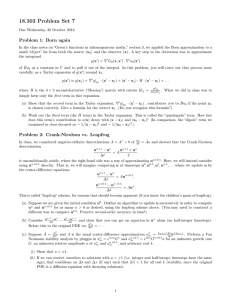
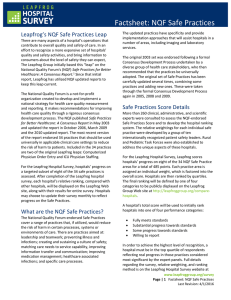
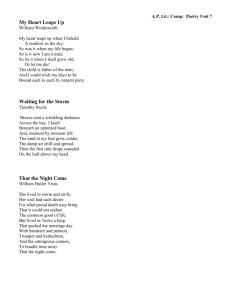
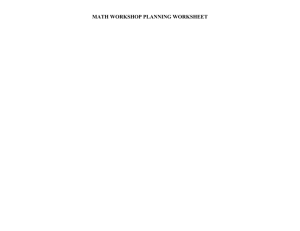
![[Date] - The Leapfrog Group](http://s3.studylib.net/store/data/007452128_1-2ccdaf0edc6c4762b1c242b11ae884dc-300x300.png)

